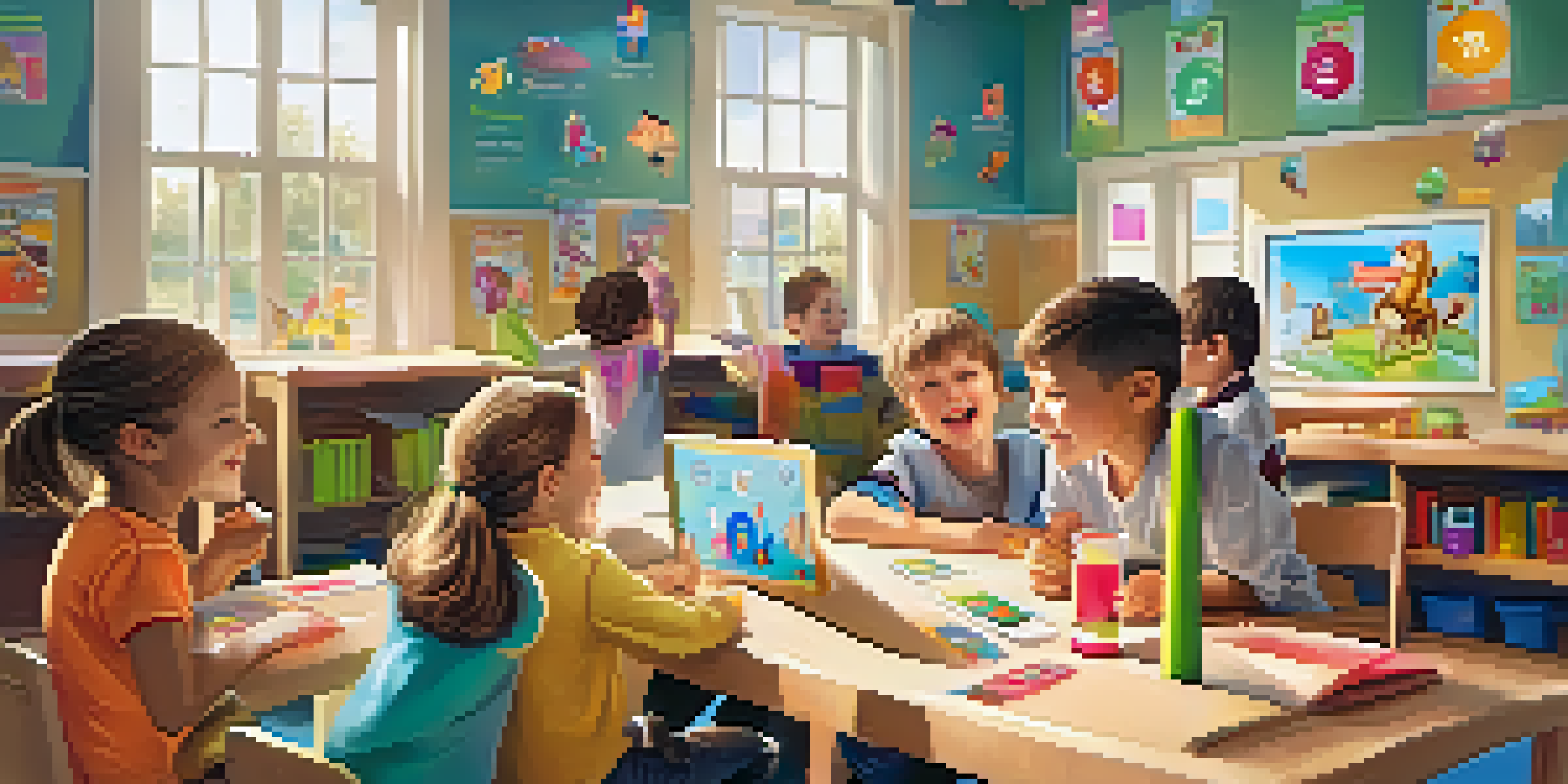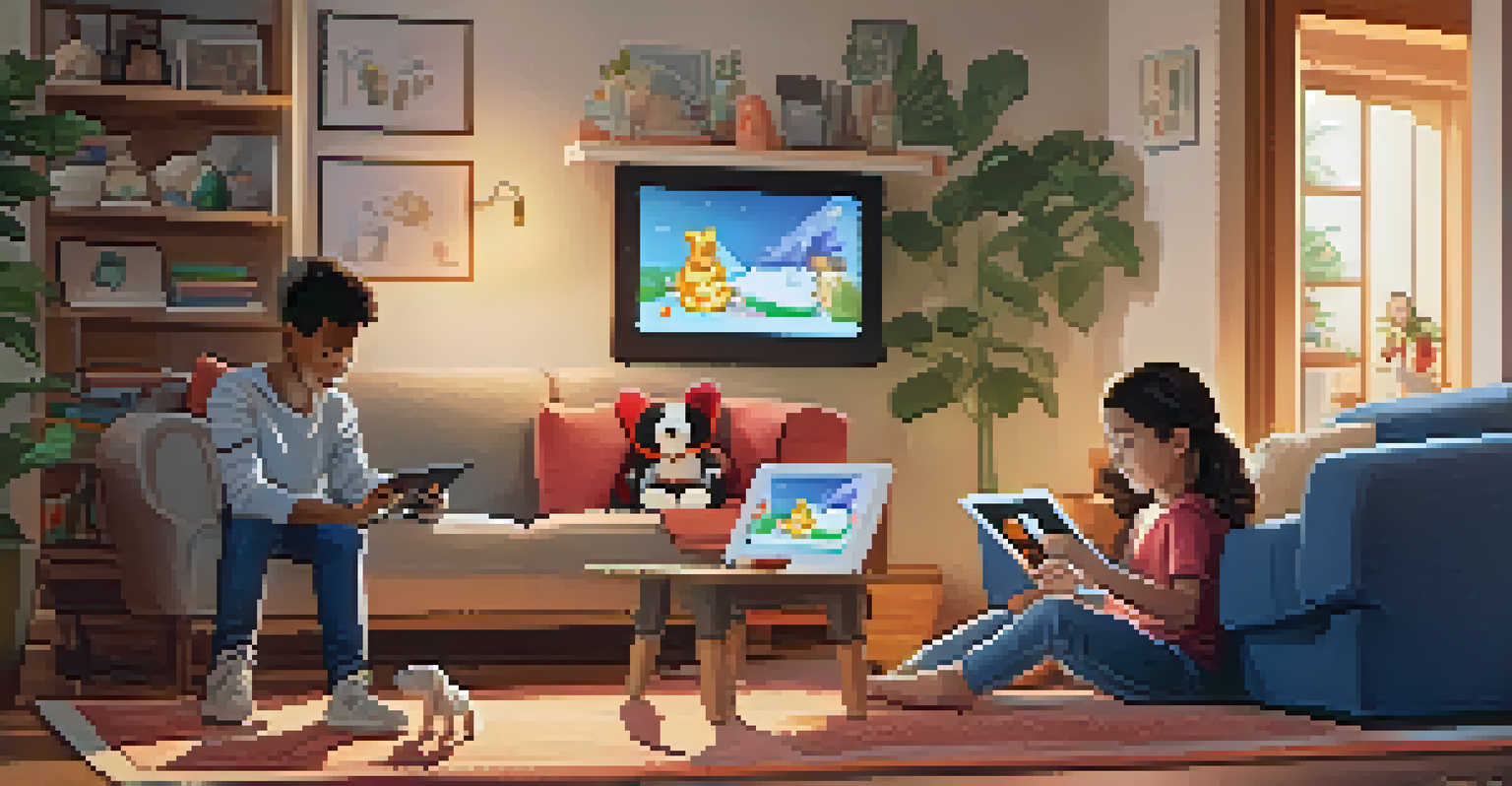Innovative AR Applications in Early Childhood Education

Understanding Augmented Reality in Education
Augmented Reality (AR) blends digital content with the real world, creating an interactive learning environment. For young children, this means bringing lessons to life in ways that traditional methods cannot. Imagine a child exploring the solar system by seeing planets orbiting around them in their classroom—this is the magic of AR.
Technology is best when it brings people together.
In early childhood education, AR can engage multiple senses, making learning not only informative but also captivating. Children can visualize concepts like numbers, letters, and even complex subjects like biology in an immersive way. This kind of engagement is crucial for young learners, as it helps them retain information better.
As educators begin to implement AR tools, they open up a new world of possibilities for interactive lessons. By merging technology with education, we can foster a love for learning that prepares children for a tech-savvy future.
Benefits of AR in Early Childhood Learning
One major benefit of AR is its ability to cater to different learning styles. Some children grasp concepts better through visual aids, while others may prefer hands-on experiences. AR can provide both, allowing educators to reach each child effectively and create a more inclusive classroom.

Additionally, AR encourages active participation. Instead of passively receiving information, children can explore, manipulate, and experiment with the content. This hands-on approach promotes critical thinking and problem-solving skills, essential for their overall development.
AR Enhances Learning Engagement
Augmented Reality captivates young learners by making lessons interactive and immersive, promoting better retention of information.
Moreover, AR can enhance motivation and excitement about learning. When children are engaged in a fun and interactive environment, they are more likely to participate and absorb information. This leads to a more dynamic classroom atmosphere where curiosity thrives.
Examples of AR Applications in Classrooms
Several AR applications are making waves in early childhood education. For instance, apps like 'Quiver' allow children to color images and then bring them to life through their devices. This not only fosters creativity but also helps with fine motor skills as they color and interact with their creations.
Education is not the filling of a pail, but the lighting of a fire.
Another example is 'AR Flashcards,' which uses augmented reality to teach children about animals, numbers, and letters. When children point their devices at the cards, they see 3D representations that enhance their understanding and retention of the material.
These innovative tools showcase how AR can transform everyday learning materials into exciting experiences. By integrating these applications, educators can create a stimulating environment that captivates young minds.
Challenges of Implementing AR in Education
While AR offers numerous benefits, there are challenges to its implementation. One significant hurdle is the cost of technology. Schools may need to invest in devices capable of supporting AR applications, which can strain budgets, especially in underfunded areas.
Another challenge is ensuring that educators are adequately trained to use AR tools effectively. Without proper training, teachers may struggle to integrate AR into their lesson plans, limiting its potential impact on students. Continuous professional development is crucial for successful implementation.
Teachers Are Key to AR Success
Educators play a crucial role in effectively integrating AR into lessons, tailoring experiences to meet students' diverse needs.
Finally, there's the concern of screen time. Parents and educators often worry about the amount of time children spend on devices. It's essential to balance digital learning with traditional methods, ensuring that AR serves as a complementary tool rather than a replacement.
The Role of Teachers in AR Integration
Teachers play a pivotal role in integrating AR into early childhood education. They are the ones who can guide students through the interactive experiences and help them make connections to the curriculum. Their enthusiasm and creativity can make AR lessons even more impactful.
Moreover, teachers can tailor AR experiences to align with their students' needs and interests. By selecting appropriate applications and designing engaging lessons, they can maximize the benefits of AR while ensuring that the content is relevant and enjoyable.
Collaboration among educators is also crucial. Sharing successful strategies and resources can lead to more effective AR implementation across classrooms, ultimately enriching the learning experience for all students.
Parental Involvement in AR Learning
Parental involvement is essential when it comes to AR learning. Parents can reinforce concepts taught in the classroom by engaging with their children in AR experiences at home. This shared interaction can strengthen the child's understanding and make learning a family affair.
Furthermore, parents can provide feedback on the AR applications their children use, helping educators understand what works and what doesn’t. This collaboration can lead to more effective lesson planning and a better overall experience for students.
Parental Support Strengthens Learning
Involving parents in AR learning at home reinforces classroom concepts and fosters a balanced approach to technology use.
Lastly, parents can help set boundaries around screen time, ensuring that AR remains a fun and educational tool without overwhelming children. By being involved, they can foster a balanced approach to technology and learning.
The Future of AR in Early Childhood Education
As technology continues to evolve, the future of AR in early childhood education looks promising. With advancements in AR capabilities, we can expect even more interactive and immersive experiences that cater to children's diverse learning styles. This evolution will keep education fresh and exciting.
Moreover, as educators become more familiar with AR, we may see a rise in innovative applications designed specifically for younger learners. This could lead to a broader range of subjects being taught through AR, making learning more comprehensive and engaging.

Ultimately, the integration of AR in education has the potential to reshape how we think about learning. By embracing these technologies, we can create a more dynamic and inclusive educational landscape for future generations.